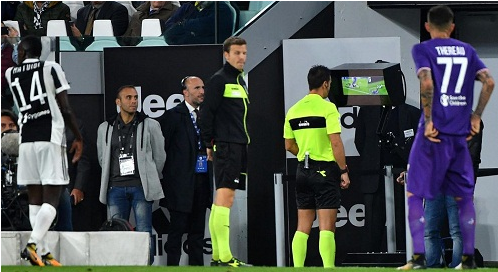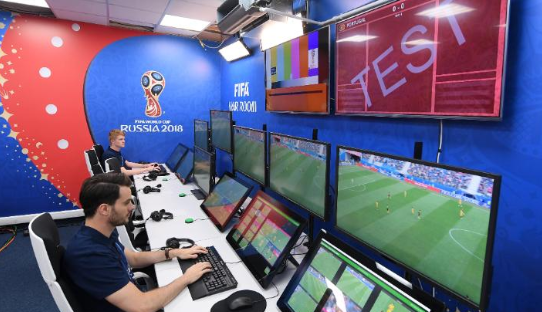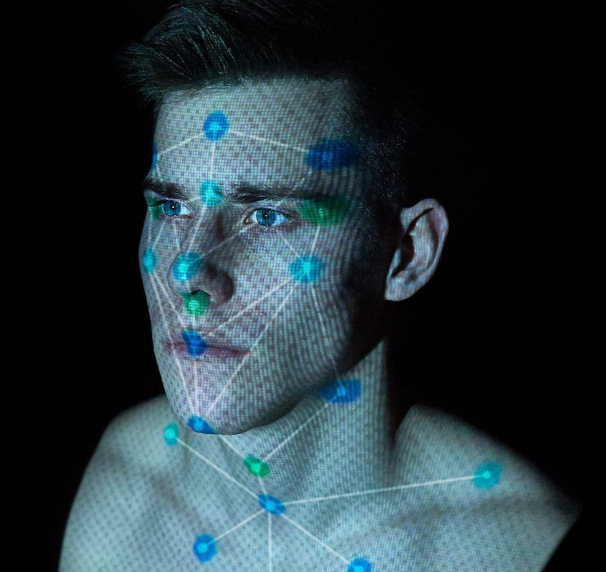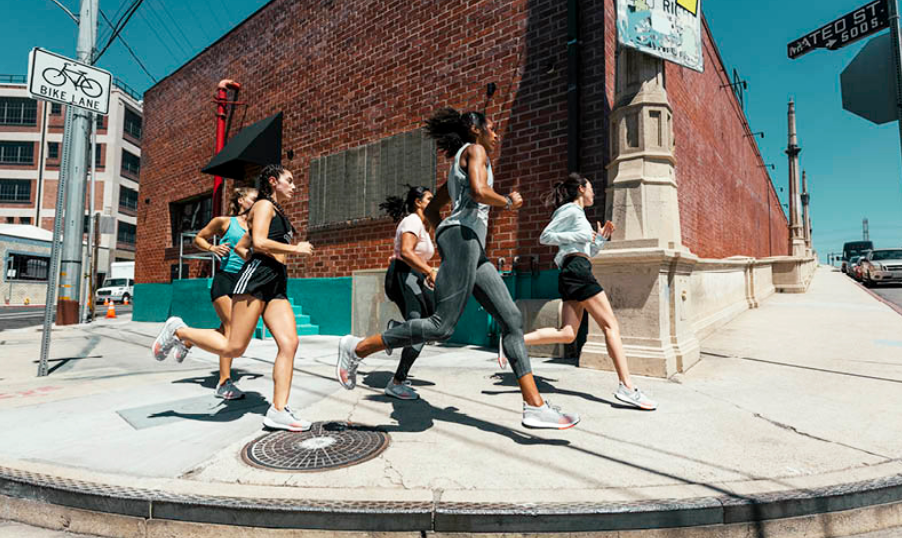Sign 2: In some situations, the referee will draw a rectangle into the space, referring to the TV screen to request information from VAR. After receiving the information, the referee draws another rectangle to continue the match.
Signs 3: most noticeable but also annoying to the audience. Referees will go to the screen located behind the pitch to watch videos, discuss with video assistants.
The referee watches the video back at the screen after the pitch
Later The decision is made, and there is still a rectangle drawn for the game to continue. This is how referee Cunha decided to give France the last penalty.
Why is VAR so controversial?
 It takes a long time for VAR to be applied. Most of this stems from technological fears that could lose the natural emotions that football brings.
It takes a long time for VAR to be applied. Most of this stems from technological fears that could lose the natural emotions that football brings.
Opponents say VAR will cause referees to stop the match continuously to watch the video. In addition, when all “injustice” is lost, football will no longer be controversial after that, which is one of the things that make the sport attractive to the king.
But supporters also have their reasons. According to the Chief Executive of the British Professional Arbitration Association (PGMOL), Mike Riley, VAR will only be used when a turning point of the match occurs, without the referee having a favorable view. .
VAR technology is controversial at the 2018 World Cup
When FIFA officially “approved” for VAR “to attend” this year’s World Cup, fans hope this technology will help the referee make the fairest decision to find the team that deserves to win.
Up to now, the 2018 World Cup group stage is about to end and there have been many situations where VAR has directly intervened and caused controversy.
The Swiss goal was controversial because the referee did not rely on VAR support.
Australian coach Bert van Marwijk expressed his dissatisfaction when referee Andres Cunha gave France a penalty after reviewing VAR technology.
The ball was controversial when Harry Kane was “dumped” by the Tunisian player
VAR has had a great impact on many matches and stirred up a series of debates even though it was only the first time it was applied in a world football.
 One of the biggest differences of the
One of the biggest differences of the  In fact, there are many situations on the field that the referee also makes mistakes. Specifically, in the match between Arsenal and Chelsea in 2014. Oxlade Chamberlain of Arsenal was the one who made the mistake but the referee suddenly chased Kieran Gibs, another player who also owns the same head as Chamberlain. Using VAR technology, the mistakes of the referees can be corrected. However, VAR also has certain restrictions to ensure not to interrupt the game.
In fact, there are many situations on the field that the referee also makes mistakes. Specifically, in the match between Arsenal and Chelsea in 2014. Oxlade Chamberlain of Arsenal was the one who made the mistake but the referee suddenly chased Kieran Gibs, another player who also owns the same head as Chamberlain. Using VAR technology, the mistakes of the referees can be corrected. However, VAR also has certain restrictions to ensure not to interrupt the game. The second video from the central control room shows the team’s work here to ensure transparency.
The second video from the central control room shows the team’s work here to ensure transparency. On the pitch, there were a lot of unclear ball situations: situations that the spectator or player saw but the referee didn’t see or the situations the referee saw but the player and the audience were confused. It’s a mistake or just an accident, causing a controversial situation. To overcome this, VAR technology was born to ensure transparency in competition.
On the pitch, there were a lot of unclear ball situations: situations that the spectator or player saw but the referee didn’t see or the situations the referee saw but the player and the audience were confused. It’s a mistake or just an accident, causing a controversial situation. To overcome this, VAR technology was born to ensure transparency in competition. For example, golf is also applied virtual golf room or equipment mounted on the sticks to analyze the shot of the player has created many objections. Those who disagree that technology will destroy the inherent nature of sport.
For example, golf is also applied virtual golf room or equipment mounted on the sticks to analyze the shot of the player has created many objections. Those who disagree that technology will destroy the inherent nature of sport. The system of
The system of  Combined with a cushioning substrate,
Combined with a cushioning substrate, 
